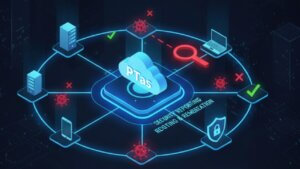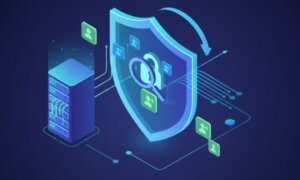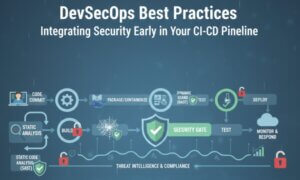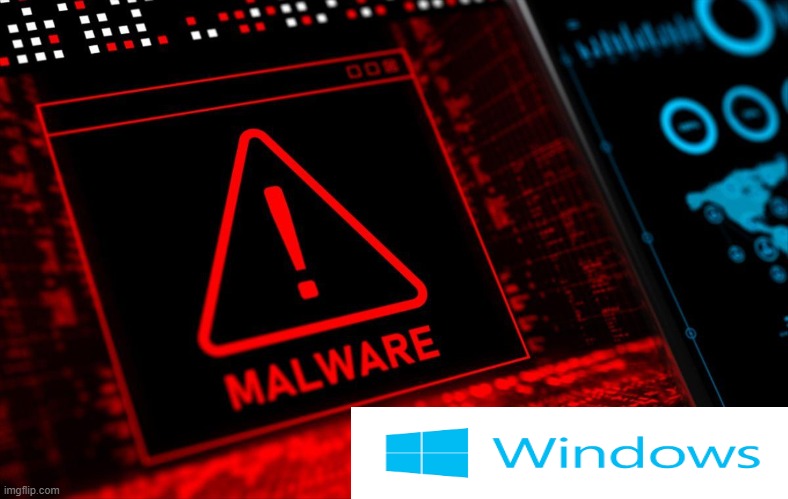NordDragonScan is a sophisticated infostealer malware that targets Windows users. This stealthy malware is designed to harvest sensitive data, including login credentials, browser history, and confidential documents, while evading detection. In this blog, we’ll explore how NordDragonScan operates, its potential impact, and how you can protect yourself from this growing threat.

Book a Free Security Audit Today
Table of Contents
What Is NordDragonScan Malware?
NordDragonScan is a high-severity infostealer that silently infiltrates Windows systems to extract valuable data. Unlike traditional malware, it leverages legitimate Windows tools like mshta.exe and PowerShell to avoid triggering security alerts.
Key Characteristics of NordDragonScan:
Data Theft: Collects saved passwords, browser data (Chrome/Firefox), and documents (.docx, .pdf, .xls).
Network Reconnaissance: Scans local networks to identify additional vulnerable devices.
Persistence Mechanism: Modifies Windows registry to survive system reboots.
Encrypted C2 Communication: Uses TLS to securely transmit stolen data to attacker-controlled servers.
This malware is particularly dangerous because it operates discreetly, making it difficult for users to detect until significant damage has been done.
How Does the NordDragonScan Attack Work?
The attack follows a multi-stage infection chain, exploiting user trust and system vulnerabilities.
1. Initial Delivery: Phishing & Social Engineering
Attackers use shortened URLs (e.g., bit.ly) to redirect victims to fake file-sharing platforms.
Victims are tricked into downloading RAR archives with Ukrainian filenames, masquerading as legitimate documents.
2. Malicious Payload Execution
The archive contains a crafted LNK shortcut that triggers
mshta.exeto run a hidden HTA script.The script copies
PowerShell.exeto a public directory, renaming it asinstall.exeto evade detection.
3. Data Exfiltration & Persistence
The malware harvests:
Browser data (passwords, cookies, history)
Files (documents, spreadsheets, VPN configs)
Screenshots of the active desktop
Establishes persistence via Windows registry modifications.
Exfiltrates data to a command-and-control (C2) server (
kpuszkiev.com) using encrypted HTTP requests.
4. Network Propagation
NordDragonScan scans the local network to identify other devices, expanding its reach within organizations.
Why Is NordDragonScan a Major Threat?
1. Stealthy Operation
By abusing trusted Windows utilities, the malware avoids raising red flags, making it harder for traditional antivirus solutions to detect.
2. Broad Data Collection
Unlike ransomware that locks files, NordDragonScan silently steals data, leading to:
Identity theft (stolen credentials)
Corporate espionage (sensitive documents)
Financial fraud (banking logins, credit card details)
The Chrome Vulnerability Exploit, posed similar threats to unprotected networks
3. Network-Wide Risks
Its ability to scan and potentially infect other devices on the same network makes it a critical threat to businesses.
How to Protect Against NordDragonScan & Similar Infostealers
Conduct Regular Penetration Testing
- Proactively identify vulnerabilities before attackers do. Companies like SecureMyOrg offer penetration testing services that simulate real-world attacks to expose weak points in your systems. These tests help:
Detect misconfigurations that could allow malware delivery (e.g., phishing susceptibility).
Validate the effectiveness of existing security controls against infostealers.
Provide actionable remediation steps to harden defenses.
Exercise Caution with Email Attachments & Links
Avoid downloading files from untrusted sources, especially shortened URLs.
Verify sender authenticity before opening RAR/ZIP archives.
Keep Software Updated
Ensure Windows, browsers, and antivirus are patched with the latest security updates.
Use Advanced Endpoint Protection
Deploy behavior-based detection tools (e.g., CrowdStrike, SentinelOne) to catch stealthy malware.
What to Do If You’re Infected?
Disconnect from the Internet to prevent further data leakage.
Run a full malware scan using a reputable antivirus.
Reset all passwords stored in browsers or key managers.
Check for suspicious registry entries and remove them.
Notify your organization’s IT team if the infection occurred on a work device.
Staying Ahead of Infostealer Malware
NordDragonScan represents a growing trend of stealthy, data-focused malware that exploits trusted systems. By understanding its attack methods and adopting proactive security measures, users and organizations can reduce their risk of falling victim.
Stay vigilant, keep your defenses updated, and always think twice before clicking on suspicious links. The battle against cyber threats is ongoing, but with the right precautions, you can stay one step ahead.
Want to Stay Ahead of Attackers? Read These Next:
Why Businesses Trust SecureMyOrg for Comprehensive Network Security
At SecureMyOrg, we uncover and fix all possible security vulnerabilities of mobile and web, while providing solutions to mitigate risks. We are trusted by renowned companies like Yahoo, Gojek and Rippling, and with 100% client satisfaction, you’re in safe hands!







Some of the things people reach out to us for –
- Building their cybersecurity program from scratch – setting up cloud security using cost-effective tools, SIEM for alert monitoring, building policies for the company
- Vulnerability Assessment and Penetration Testing ( VAPT ) – We have certified professionals, with certifications like OSCP, CREST – CPSA & CRT, CKA and CKS
- DevSecOps consulting
- Red Teaming activity
- Regular security audits, before product release
- Full time security engineers.
Check Out New Updates

Why Regular Penetration Testing is Essential for Modern Companies
Penetration testing as a service (PTaaS) lets experts simulate real attacks to uncover vulnerabilities before hackers do. This guide explains the process, benefits, and costs, helping businesses strengthen defenses with predictable, ongoing security checks.

What Is Penetration Testing as a Service?
Penetration testing as a service (PTaaS) lets experts simulate real attacks to uncover vulnerabilities before hackers do. This guide explains the process, benefits, and costs, helping businesses strengthen defenses with predictable, ongoing security checks.

How To Inspect Encrypted Traffic Without Breaking Privacy
Network administrators face a challenge: securing systems while respecting privacy. This guide explains how to inspect encrypted traffic without breaking privacy using metadata, anomaly detection, and machine learning ensuring visibility, compliance, and trust.

How to Audit Infrastructure as Code (IaC) for Security Vulnerabilities
Discover how to audit Infrastructure as Code (IaC) for security vulnerabilities with this practical guide. Learn to scan IaC files using tools like Checkov, fix issues like exposed resources, and integrate audits into CI/CD pipelines. Protect your cloud systems from misconfigurations and ensure compliance with clear, actionable steps.

DevSecOps Best Practices: Integrating Security Early in Your CI/CD Pipeline
This article provides a practical guide to embedding security into every stage of your CI/CD pipeline. Learn core DevSecOps best practices like SAST, DAST, dependency scanning, secrets management, and compliance automation to catch vulnerabilities early, foster a culture of shared ownership, and build a secure-by-design development process that accelerates release cycles.

5 Cloud Misconfigurations That Lead to Data Breaches
Cloud misconfigurations are one of the leading causes of data breaches, yet they’re also among the most preventable. From exposed storage buckets to weak IAM policies, attackers exploit these mistakes daily. Learn about the top 5 misconfigurations and how your organization can fix them before they lead to costly data exposure.
